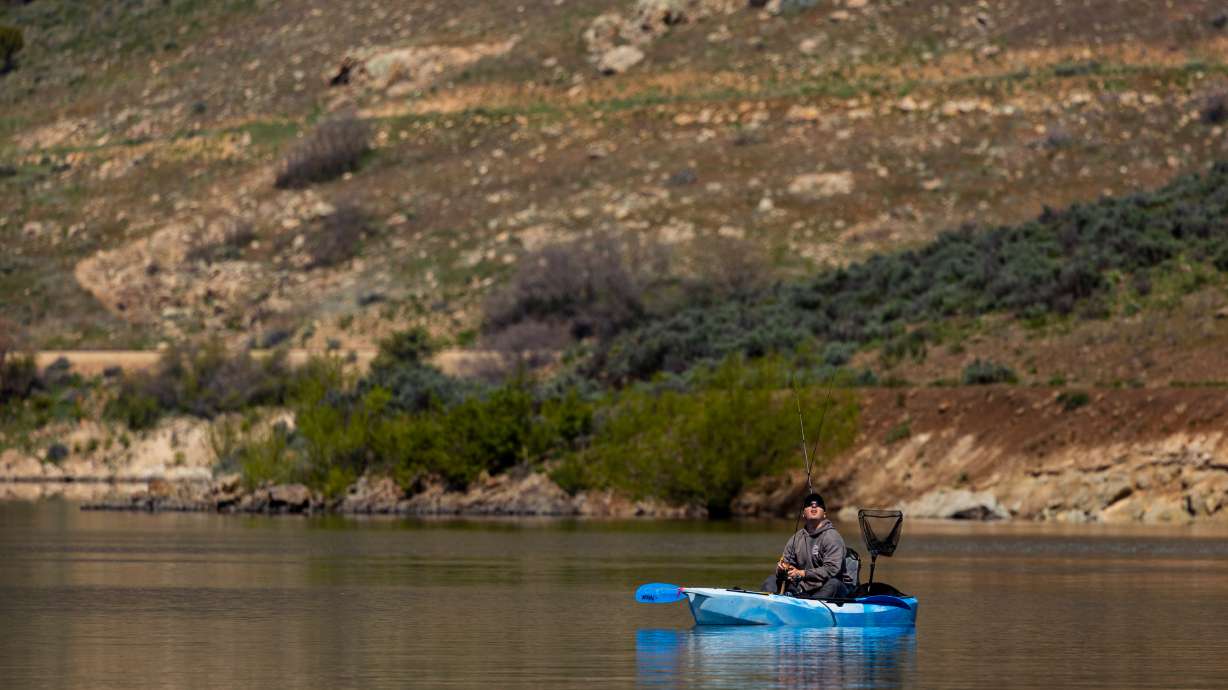Estimated read time: 4-5 minutes
This archived news story is available only for your personal, non-commercial use. Information in the story may be outdated or superseded by additional information. Reading or replaying the story in its archived form does not constitute a republication of the story.
SALT LAKE CITY — Utah's reservoir system is now back to 90% of capacity for the first time since it had fallen to below the halfway mark during a severe multiyear drought, but Gov. Spencer Cox says Utahns should continue to save water.
The Utah Division of Water Resources reported it reached that level on Thursday, the highest the reservoir system has been since at least June 2020, when it was listed at 89% full at the start of the month. The statewide figure is based on dozens of reservoirs across the state, aside from Lake Powell and Flaming Gorge, which generally don't contribute to the state's water supply.
Dozens of the state's largest reservoirs are already back to at least 80% capacity. Yuba Reservoir, at around 50% capacity, is the only major system that isn't at least 60% full, according to the division.
There's also more water on the way. One-third of Utah's average snowpack has yet to melt, so some reservoirs may continue to see an influx of water over the next few weeks. Some of the available reservoir storage was created through controlled releases to avoid flooding concerns as the last of the snowpack melts.
"We still have a good amount of snow in the mountains, so we are hoping for a gradual snow melt," said Candice Hasenyager, the division's director, in a statement Thursday.
About 95% of Utah's water supply comes from the snowpack collection and spring snowmelt process, which is captured at reservoirs. Utah's system topped out at 86% capacity from last year's record snowpack after falling to 42% in late 2022 amid a long-term drought.

Thursday's update shows how far Utah has come from the drought, but it's not the only encouraging statistic. The U.S. Drought Monitor's latest report notes that only 0.21% of Utah is in moderate drought. It's the state's lowest moderate drought percentage since August 2019, the last time the agency didn't list any parts of the state in this category.
About a quarter of Utah remains "abnormally dry," a category the state last avoided in 2017.

While Cox acknowledged Utah's water progress during his monthly press briefing with reporters, he said it won't change the conservation message the state initially rolled out during the extreme drought between late 2020 and early 2023.
"Keep conserving," he said. "It's actually working. I know we've had a good water year, but we're well ahead of where we would have been because people conserved last year in what was a record water year."
Cox pointed out that Utahns broke the standard consumption cycle by conserving last year. People typically follow water restrictions during drought years but don't conserve as much during wet years, but ongoing consumption reduction was a key reason why Utah's reservoir system only dipped to 74% capacity last fall. That left it 19 percentage points above the median average at the start of the 2024 water year.
With agricultural water optimization, turf buyback and other water reduction programs in place, the governor said he's hopeful that the trend will continue.
"(It) means there's been a paradigm shift, and we need that paradigm shift to continue," he added.
Water consumption reductions haven't just helped Utah's reservoirs, they're also helping the Great Salt Lake.
The lake's southern arm reached an average of 4,195 feet elevation this week, the beginning of what state officials refer to as the "transitionary zone." That's where there are still some adverse effects — such as dust blowing off the dry lakebed — but it's not as dire as anything below 4,192 feet elevation.
It's expected to drop back below this zone later in the year, but Great Salt Lake Commissioner Brian Steed said this week that reaching the mark this year is still "significant" because it has lowered salinity levels and allowed the lake's ecosystem to rebound.
Cox said if Utah's water consumption reduction patterns continue, the lake could be in for another boost next year even with an average snowpack. Its recovery, he adds, can help the state avoid costly dust mitigation and other environmental projects tied to a low lake.
"We're going to hold firm to what we're doing and keep it going," he said. "I want to see the lake in a much-healthier status and I truly believe that we can get there. As of right now, there are no intentions of pulling back in any way."
Contributing: Bridger Beal-Cvetko










